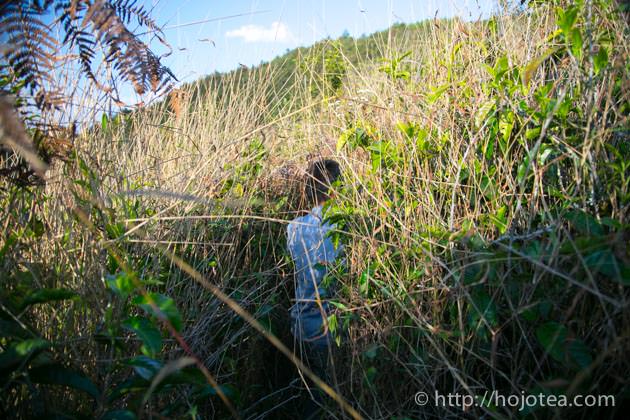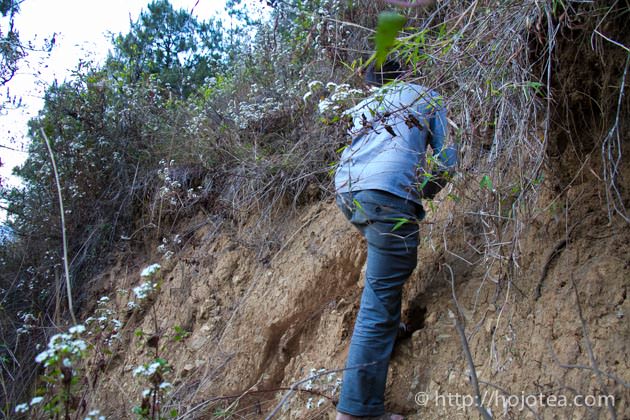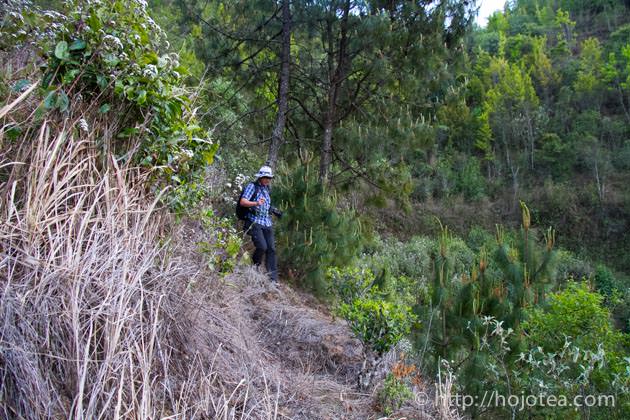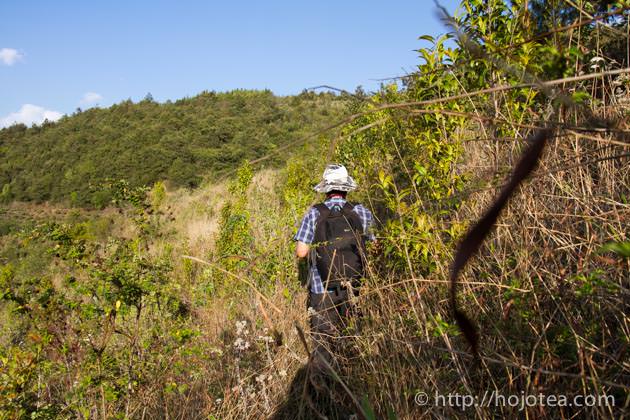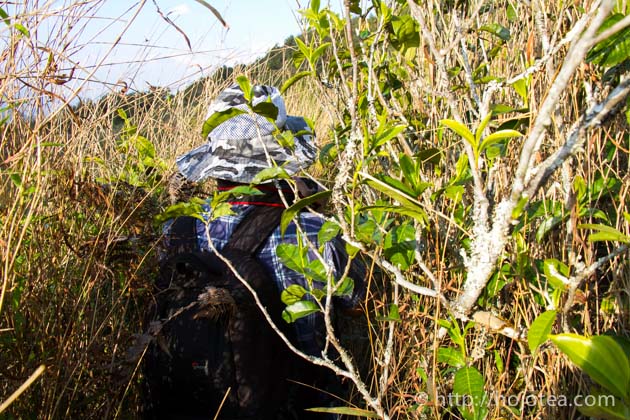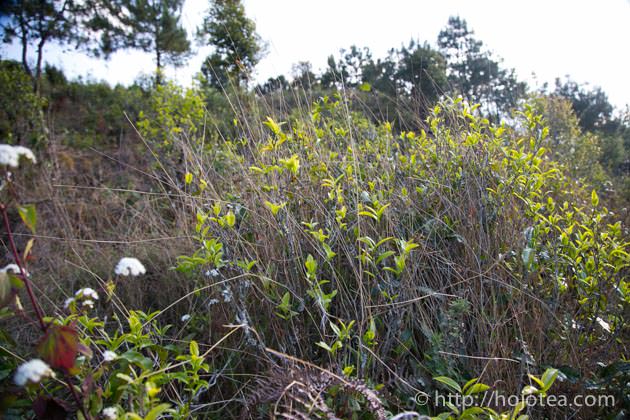- HOME >
- How to choose quality tea
Natural farming tea garden that is beyond agriculture

As compared to other places in China, every year I spend a lot more time in Yunnan. The reason is simple. In the entire world of tea, besides Yunnan, it is hard to find another place that is so rich in the natural-farmed tea. In Yunnan, we have a bountiful opportunity to explore the tea grown with eco-friendly style. When we mentioned Yunnan, many people may associate it with the pu-erh tea. However, it is the general idea. If we spend some time and carefully look for the manufacturer, there are skilled-manufacturers making the green tea, white tea, black tea and even oolong tea too.
Visiting ultimate natural farming garden
From my point of view, the natural farming refers to the tea trees as being part of surrounding ecology system. During my one-month stay in Yunnan, I have visited many natural-farmed tea gardens. But I would like to introduce one particular tea garden which has left me a very deep impression. The garden belongs to Mr. Liu, one of my important tea manufacturers. He loves natural farming. But his style is somehow a little extreme. In his tea garden, he gives no fertilizer, no pesticide and no pruning. In addition, he never even conducts any weeding at his tea garden.
Visiting natural farming tea garden was like an expedition
In fact, there are many styles in so-called natural farming. Some of them are fairly organized and some of them are very wild. Mr. Liu’s tea garden turned so wild style that it is hard for me to tell if I should call it natural farming or back to the wild. His tea garden was completely assimilated with the surrounding nature. I followed Mr. Liu and walked for about 1 hour to reach the foot of his tea garden. It was located at the altitude around 2000-2100m. The slope was very steep and fully covered with bush. We needed to sometimes walk like an animal, sliding down and jump over. It was like an expedition.
Naturally farmed tea leaves are shining in golden colour
When Mr. Liu pointed where his tea garden is situated, it looks nothing but just ordinary mountain. We could only notice the bushes and some taller trees and we could barely see any tea tree. It took us another half an hour walk at the slope to reach the location where some tea trees were scattered. Tea tree was grown independently without the care of human. The tea leaf was yellow colour and it was shining. Usually, when uses fertilizer, the tea tree produces very green and big leaves. The fertilizer increases the growing speed of tea. Subsequently tea has to increase the speed of photosynthesis in order to support the fast growing speed. This is how the more number of chlorophylls is composed and tealeaf turns very green in colour. The naturally farmed tea grows slowly. As a result, it is yellow like the colour of ripen banana skin. The tea leaves were shining like gold; it is simply beautiful!
- Tea grown in the surrounding ecology produces yellow leaves

It is easy to tell whether tea is naturally farmed or not. Usually, naturally farmed tea produces relatively smaller leaf. In addition, the vein on the leaf is slimmer and the colour of leaf is more yellowish. Besides, the distance of tea leaves on the twig is closer to each other. It shows that tea is growing slowly.
Tea grows very fast when fertilizer is used. As a result, the distance between the 1st leaf and 2nd leaf or 3rd leaf is longer.
We bought tea from the entire garden of Mr. Liu.
When I was walking around the Mr. Liu’s tea garden, I kept plucking and eating the fresh tea leaves. To my surprise, it is not bitter at all. It gives super deep aftertaste and the sweetish taste lingers down my throat for a long time. I immediately decided to purchase all teas available from this tea garden. Due to the extremely wild environment, the access to this area was easier said than done; Mr. Liu had a difficulty to allocate the tea pluckers as they normally prefer a more “tamed” environment. At last, he managed to arrange some people for plucking since we made a firm confirmation. The mao-cha after the sunshine drying appeared yellowish colour, follow the colour of the fresh tea leaf.

Since the tea is collected from the tea garden owned by Mr. Liu, it is named as Liu Jia Raw Pu-erh Tea.
Related Articles
How to get the latest update on HOJO?
1. Follow Twitter, 2. Click "Like" on Facebook, and 3. Subscribe in newsletter. You can have the latest tea news from HOJO.
 Subscribe the Newsletter to enjoy the privileges
Subscribe the Newsletter to enjoy the privileges- You may receive a free sample upon purchase, or you may have the priority to purchase special products. So please remember to subscribe our newsletter as well as the social network.
- Myanmar White Tea Bud 2013 from Guo Gan, Myanmar
- We have released a raw Pu-erh tea, 緬甸白芽茶 2013 (Myanmar White Tea Bud 2013), produced by ethnic minorities in t …
- Yong De Wild White Tea 2025 Loose Leaf Limited Release
- We have released Yong De Wild White Tea Loose 2025. For the 2025 harvest, only the loose-leaf type was …
NEW ARTICLES
 Myanmar White Tea Bud 2013 from Guo Gan, Myanmar
Myanmar White Tea Bud 2013 from Guo Gan, Myanmar- We have released a raw Pu-erh tea, 緬甸白芽茶 2013 (Myanmar White Tea Bud 2013), produced by ethnic minorities in t …
 Yong De Wild White Tea 2025 Loose Leaf Limited Release
Yong De Wild White Tea 2025 Loose Leaf Limited Release- We have released Yong De Wild White Tea Loose 2025. For the 2025 harvest, only the loose-leaf type was …
 Experience the True Freshness of Raw Pu-erh : Tang Jia 2025 Loose Leaf Release
Experience the True Freshness of Raw Pu-erh : Tang Jia 2025 Loose Leaf Release- We have released Tang Jia Raw Pu-erh Tea 唐家古樹生茶 2025 Loose Leaf. Among HOJO’s raw pu-erh teas, Tang Jia Raw Pu …
 Yunnan Chun Jian Green Tea from High Mountain Gardens
Yunnan Chun Jian Green Tea from High Mountain Gardens- Yunnan Chun Jian Green Tea is now available. This tea is made from naturally grown leaves harvested from high …
 Limited Loose Leaf Release of 2025 Da Xue Shan Wild Raw Pu-erh Tea
Limited Loose Leaf Release of 2025 Da Xue Shan Wild Raw Pu-erh Tea- We have released the 2025 loose-leaf version of Da Xue Shan Wild Raw Pu-erh Tea. This tea comes from wild tea …
 Discover a New Way to Enjoy Tea: Cooking Rice with Tea
Discover a New Way to Enjoy Tea: Cooking Rice with Tea- Cooking rice with tea is a simple idea, but it brings surprisingly satisfying results. The tea’s flavour seeps …
 2025 Da Xue Shan Wild White Tea Now Available from Yunnan
2025 Da Xue Shan Wild White Tea Now Available from Yunnan- The 2025 harvest of Da Xue Shan Wild White Tea is now available. Crafted from truly wild Camellia taliensis tr …
 Fresh 2025 Yunnan White Tea – Select Your Favourite Lot Before Blending
Fresh 2025 Yunnan White Tea – Select Your Favourite Lot Before Blending- Freshly crafted in Yunnan and just arrived in KL, our new 2025 white tea is now available at our Gardens Mall …
 2024 Dong Shan Raw Pu-erh Tea – Crafted with the Producer for Desired Quality
2024 Dong Shan Raw Pu-erh Tea – Crafted with the Producer for Desired Quality- We have released the 2024 cake of Dong Shan Raw Pu-erh Tea. Earlier, we offered the loose-leaf version from th …
 Development of Firewood Roasted Hojicha Using Naturally Grown Tea from Yunnan
Development of Firewood Roasted Hojicha Using Naturally Grown Tea from Yunnan- We are currently staying in Yunnan Province for tea production. As the season nears its end, tea trees with pa …
Category
- New Arrival at HOJO Online Shop
- Featured Articles
- Newsletter
- Types of Tea
- Origin of Tea
- Teapot and Tea Equipment
- Tea Column
- How to enjoy tea
- Tea Processing
- How to choose quality tea
- Tea constituents and functional effect
- Safety of Tea
- Foods
- Tea Business Operation
- Hobby and Outdoor Activity
- Ranking of Tea
- Video
- FAQ
- Media Release
Profile

- AKIRA HOJO
- I invite you to experience my tea selections.I was born in Nagano, Japan. In university, I studied agricultural chemistry, and I have the master degree in food science. I worked in Japanese food industry for 10 years. I involved in R&D, QC and QA. As a factory manager, I implemented ISO9000 series and managed the factory.
- The Art of Tea Magazine
- We posted the article on “The Art of Tea Magazine No.9, the magazine is published in Taiwan. We featured …
- New Straits Times
- The Malaysian National Newspaper, New Straits Times featured HOJO Tea on 17-Oct-2007.
Shop Info

Address:Lot No. T-215, 3rd Floor, The Gardens Mall, Mid Valley City, Lingkaran Syed Putra, 59200 Kuala Lumpur
Tel: +603-2287-4537
Business Hour: 10am to 10pm


